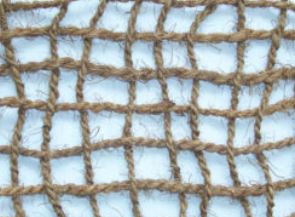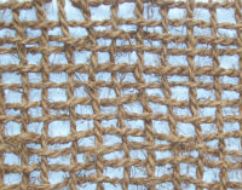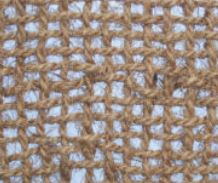(800) 748-5647
(800) 748-5647

Coir fiber is obtained from the bristles of the outer layer of the fruit of the Coconut tree and is 100% biodegradable. Coir Mats are woven with co...
View full details
Coir fiber is obtained from the bristles of the outer layer of the fruit of the Coconut tree and is 100% biodegradable. Coir Mats are woven with co...
View full details
Coir fiber is obtained from the bristles of the outer layer of the fruit of the Coconut tree and is 100% biodegradable. Coir Mats are woven with co...
View full detailsManufactured of high strength bristle twine, coir matting provides 4 - 6 years of high strength erosion control.
Popular Uses for coir Matting:
- Stabilizing Slopes
- Restoring Stream Banks
- Wetland Restoration
- Erosion Control on Hillsides
- Filtration & Control of Channels
- Vegetation Erosion Control Matting
Erosion Control For Hillsides
There are always concerns about possible erosion when dealing with slopes and/or hillsides. Every time it rains, the soil becomes dislodged, forming particles. As these particles gather and run down the slope other particles will be picked up along the way. Do the math and you will discover how one rainstorm can cause a great deal of erosion if left unchecked. Every particle that lands in water will settle out once the runoff slows down. In turn, these areas will have a buildup of silt and lead to serious problems for the stability of certain areas such as swimming pools or driveways.
 These situations can lead clogs in neighborhood drainage systems and storm drains. Erosion has always been a big problem for residences that are located around hillsides because the lots have cut slopes above and fill slopes on the bottom.
These situations can lead clogs in neighborhood drainage systems and storm drains. Erosion has always been a big problem for residences that are located around hillsides because the lots have cut slopes above and fill slopes on the bottom.
Different slopes have different requirements for erosion control. Cut slopes are higher in risk from surface erosion problems. Fill slopes might experience surface erosion but are more likely to cause subsurface issues that will result from improper compaction before construction.
 Worse case scenario, underground moisture can lead to serious destabilizing of the earth. Probably the best example of this kind of erosion is the heavy rainfalls in California that have led to mudslides in many neighborhoods.
Worse case scenario, underground moisture can lead to serious destabilizing of the earth. Probably the best example of this kind of erosion is the heavy rainfalls in California that have led to mudslides in many neighborhoods.
Plants used for erosion control are natural protectors of the soil. They provide foliage on the ground which will prevent rain from falling directly on the soil particles. The plants slow down the speed of rainfall so it enters the soil in gently. Adding to that, the plant's roots will bind the soil underground. The best choices for slopes are plants with large, fine roots that spread over large areas and provide stabilization. A plant's root system and its growing habits can decide which plants are best for erosion control. Speak with your landscaper or contractor to help you find what will work best for your surroundings. They know what plants will work best for your slope and which ones will work directly with irrigation.
Ground cover plants will protect surfaces from erosion. An excellent choice is English Ivy as this plant will bind to the surface tightly and will cover everything with a density of foliage. Plants should be irrigated by a sprinkler system.
Creeping plants or shrubs will prevent subsurface and surface erosion as well. Shrubs such as prostrate rosemary have only one stem that will spread out in every possible direction with a carpet of foliage. This plant will slow down the rainfall while receiving water only at the trunk of the shrub. This plant works best with either drip or bubbler irrigation system.
Hydroseeding is great for sewing seeds for larger areas and will cause immediate coverage. This is a good choice allowing the soil to stay in place while other plants are maturing. It will reduce sediment and runoff during the first rainy season. It is common practice to place plants in containers along slopes and then spray the seeds directly over the top of the containers. This method is good for both short-term and long-term results.
Your landscaper or contractor will be the best resource for finding the right plants for your area to prevent erosion around your home.
The steeper the slope the different approaches will be taken. Some slopes will require retaining walls and the steepness of the slope will be dictated by city or county codes. Most fill slopes do not require a specific soil type but cut slopes can be a challenge. This will affect the time it will take to dig planting holes or a trench for irrigation. It will also affect the speed ratio water will penetrate the ground.
Geotextiles are susceptible before and after planting as plants take time to establish both above and below the ground. Your landscaper or contractor may recommend geotextile that is a made-made material that is biodegradable and can be pinned directly to the ground and then plants can be placed through the fabric.
Burlap is susceptible to disintegration when placed on a very steep slope. A large square jute mesh is commonly used for landscaping because it's planted directly through the grids.
Coir matting is a byproduct of coconut production and has a great water holding ability and will resist decomposition.
